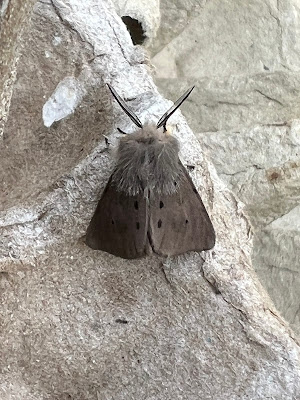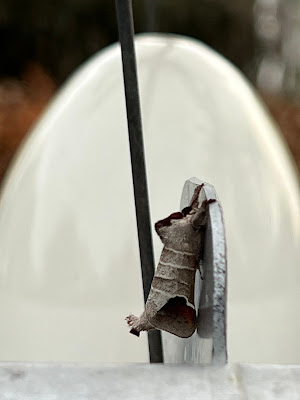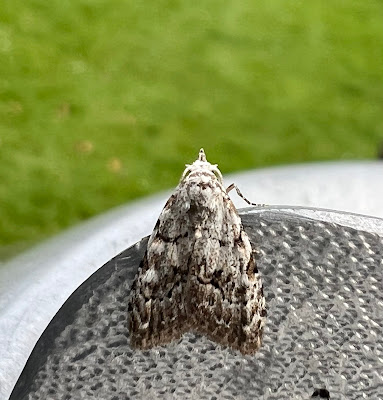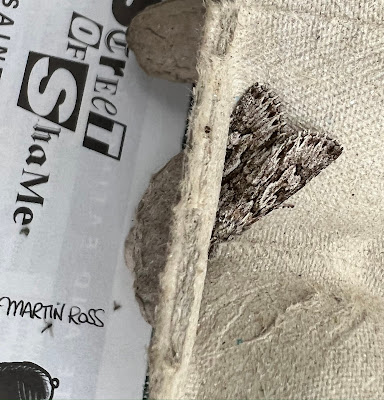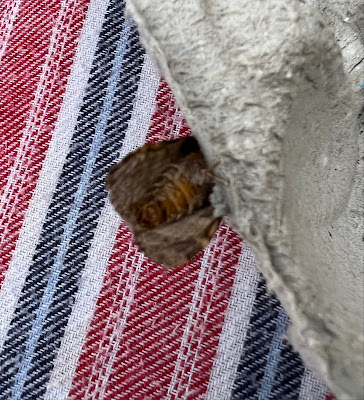Today's top moth is a really exciting find - not by myself but by a good buddy whose excitement I most happily share at second-hand. He is one of a number of people who kindly ask me from time to time about the identity of their garden discoveries, a rash thing to do as readers familiar with my many blunders will know.
Martin's Moths
A tale of moths and men.
Tuesday 23 April 2024
Slenderly Magnificent
Sunday 14 April 2024
The year's first Empress
The first of the big annual highlights took place here on Thursday night, the arrival of a female Emperor moth in the trap were she obligingly laid some eggs. Breeding Emperors and Empresses has been a regular feature of life here among the moths - three successive generations raised in past years, one of them shown in the blog's title section - but I don't have time for that at the moment. They will have to take their chance in our hawthorn hedge.
I left the Empress discreetly in the shed to see if any males would be attracted by her pheromones, a process known as 'assembling' which can draw suitors from up to a mile away. None came and I moved her to a budding hibiscus but she spent the afternoon undisturbed before clearing off.
An other favourite came the same night, spurning the eggboxes and instead taking up position on the lightbulb-holder. It's a Chocolate-tip, happily-times to cheer up a little great-niece who is recovering in hospital from a nasty infection.
A second one came last night and two American friends who are staying with us took these excellent photos making further revelations of the patterns and colours which the Muslin usually hides. Please note my lovely finger.
Saturday 13 April 2024
Jewel Box
Thursday 11 April 2024
Grandchildren, take two
The grandchildren are back again and the moths are getting used to clambering on to fingers much more delicate than mine. I sometimes get a little impatient with this hobby but wrongly; as the granddaughter points out, the exercise often makes the males show their antennae, their most interesting organ for me, if only because we humans don't have them.






